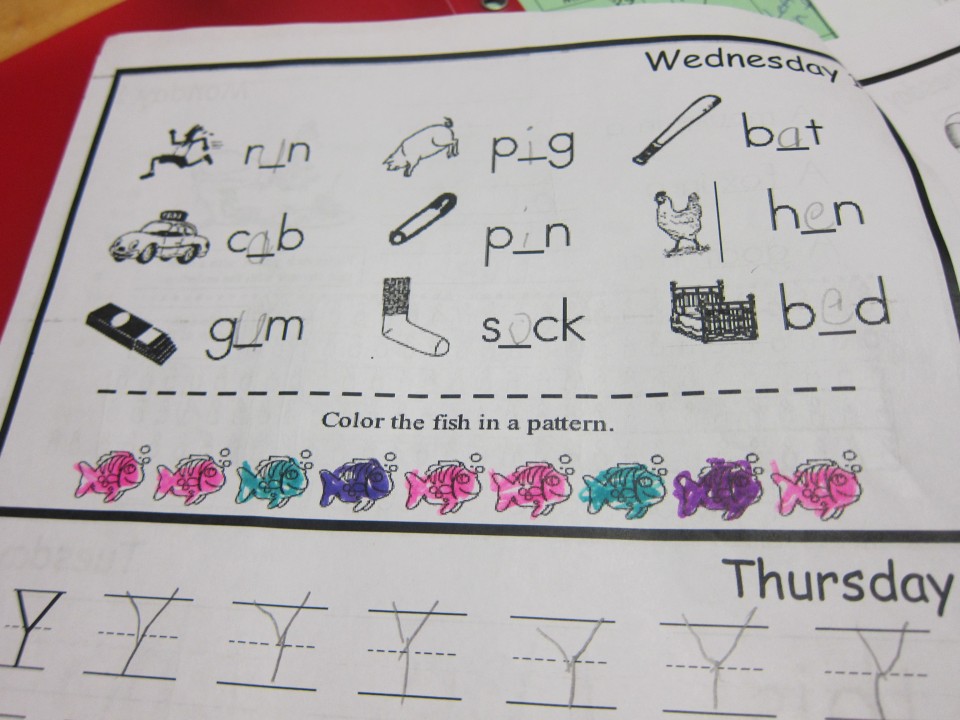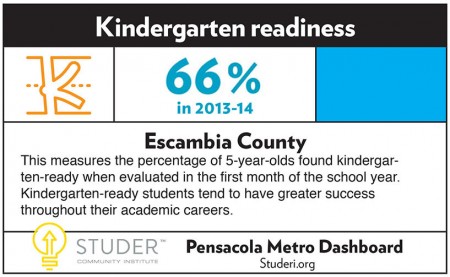Impact of Pre-K on Florida children on UWF researcher's mind
- September 30, 2016
- / Shannon Nickinson
- / education

Kindergarten homework.
Early learning is on a lot of people’s minds.
Among a group of economists hired by the Haas Center at the University of West Florida earlier this year is Dr. Kalyan “Kal” Chakraborty.
He has a lot on his plate, but one of the things Chakraborty wants to look into is the impact of early education in Northwest Florida.
Kindergarten readiness — one of 16 metrics in the Studer Community Institute's Pensacola Metro Dashboard — is considered an early gauge of a child's success in progressing through school. In the last year for which the state of Florida released the data, 66 percent of Escambia County's kindergartners were kindergarten ready.
Chakraborty is an associate director and senior research scientist at the Haas Center with a speciality in applied microeconomics, regional economics, resource and recreational economics, economics of public education, and economics of biotechnology and policy.
One of his first big projects is a study on the economic impact of new biking trails in Northwest Florida and the economic impact of water-based outdoor recreation in the state of Florida.
Then he wants to get into preschool.
“There is sophisticated research economists are doing (on early learning), there are several factors in it,” Chakraborty says.
He references the oft-cited statistic from Nobel Laureate Dr. James Heckman that every $1 invested in quality early childhood education for poor children delivers gains of $7 to $10 in school achievement, health behavior and productivity.
“If a $1 invested before a child is 4, at a minimum rate of return at 3 percent, that generates the $7 to $12 return on investment,” Chakraborty says. “(Return on investment) is a common calculation economists use.”
Chakraborty says in Heckman’s study, “all of the other things we might do — on the job training, subsidies to child in school, reducing the class size — none would yield the same kind of return on investment as investing in the birth to 5 space.”
The positive effect is most pronounced for children from low-income families.
“Stanford found only a mild benefit from preschool for middle class and well-off families that dies off by fifth grade,” he says.
The lasting impacts from the investment in early education, Chakraborty says, come not in achievement test scores, “but in the life-long achievement, the motivation, the learning attitude, more social stability, less crime, all these factors.”
“Test scores are some part of it, but it is not everything that we should be focusing on,” Chakraborty says. “We need to give support to those families, to see how they will offer the care to these children and their little brains that are developing.”
Florida’s voluntary prekindergarten program is now more than 10 years old. Chakraborty says he would like to see if there is data that accessible from the first group of children who went through VPK to see what can be seen of the impact the program has had.

 CivicCon launches with a look at good growth in cities
CivicCon launches with a look at good growth in cities
 Building stronger brains one baby, one parent at a time
Building stronger brains one baby, one parent at a time
 SCI debuts commercial on Early Learning City
SCI debuts commercial on Early Learning City
 Entrecon: World class speakers and an opportunity to sharpen skills
Entrecon: World class speakers and an opportunity to sharpen skills
 PYP Quality of Life survey 2017
PYP Quality of Life survey 2017
 EntreCon Pensacola 2016: A look back
EntreCon Pensacola 2016: A look back
 Leadership tip: getting better employee takeaways
Leadership tip: getting better employee takeaways
 Leadership tip: be interested instead of interesting
Leadership tip: be interested instead of interesting
 Leadership tip: delivering difficult messages
Leadership tip: delivering difficult messages
 Brain Bags boost Arc, Early Childhood Court programs
Brain Bags boost Arc, Early Childhood Court programs